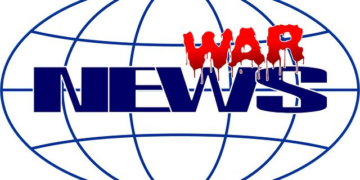Table of Contents
Introduction: The Deception of a Dumb Name
For years, as a music journalist, I’ve held a certain belief about the architecture of success in the music industry.
Band names, I thought, were strategic assets.
They were workshopped, focus-grouped, and selected for their evocative power or marketability.
Logos were commissioned from design agencies, meticulously crafted to become globally recognized symbols.
Then there was Korn.
Korn was the anomaly, the wrench in the gears of this tidy theory.
Their name was juvenile, a playground taunt.
Their logo was a crude, almost illegible scrawl.
By every conventional metric, their branding should have been a catastrophic failure, relegating them to the cutout bin of forgotten 90s acts.
Yet, the opposite happened.
They didn’t just succeed; they defined a generation, sold tens of millions of albums, and built one of the most durable and recognizable brands in modern music history.
This contradiction was my professional obsession.
The official stories I’d encountered over the years felt like polite fictions, a flimsy curtain drawn over something far more raw and interesting.
The band members themselves would chuckle, calling it a “dumb name” that the music somehow made cool.1
But that explanation was too simple.
It didn’t account for the sheer, defiant power of their identity.
It felt like they were letting us in on part of the joke, but not the whole punchline.
My core struggle was reconciling the band’s monumental, culture-shifting impact with an identity that seemed, on its face, to be an act of commercial self-sabotage.
This report is the result of an investigation to find the real story—the one that makes sense of the contradiction.
It is a forensic unfolding of how a band from Bakersfield, California, used a disgusting inside joke, a defiant ultimatum, and a child’s crayon to forge an identity so authentic and confrontational that it became the very voice of a broken generation.3
This is the story of how the “dumbest name” became a masterstroke of branding, not by following the rules, but by smashing them to pieces.
Chapter 1: The Public Record and the First Layer of Defiance
The investigation into Korn’s name begins, as most do, with the public record—the sanitized, easily digestible version of the story.
This first layer of the origin myth is simple and almost mundane.
As the band was forming and searching for a name, someone casually suggested “corn”.1
The idea was initially rejected, but guitarist James “Munky” Shaffer later revisited it with a crucial twist: spell it with a “K” instead of a “C” and flip the “R” backwards.1
This account, while factually correct in its description of the stylization, is deceptively incomplete.
It presents the choice as a whimsical, stylistic flourish rather than the act of profound defiance it truly was.
The first real clue that something more was at play emerges from a consistently told anecdote that can only be described as the band’s foundational act of rebellion: the “Larry” ultimatum.
This story, corroborated over decades in separate interviews by frontman Jonathan Davis and bassist Reginald “Fieldy” Arvizu, reveals that the name “Korn” was not a casual choice but a line drawn in the sand against the very industry they were trying to enter.6
Their manager at the time, a man named Larry, was horrified by their choice.
From his perspective, grounded in the conventional wisdom of the music business, the name was a non-starter.
“You can’t name your band Korn,” he insisted, seeing it as commercially toxic.2
A typical fledgling band, desperate for a break, would have likely acquiesced, returning to the drawing board to find a more palatable, “cooler” name.
Korn did the opposite.
Faced with this professional rejection, the band didn’t compromise; they escalated the absurdity.
Their response was a brilliant piece of extortionist logic.
“Well, we’re gonna name it Larry then,” they shot back.9
This counteroffer was a masterstroke of defiance.
It weaponized their manager’s own identity against him, forcing him into an impossible position.
As Fieldy recalled, they even threatened to put his face on the album cover.7
The ultimatum was clear: embrace the name you hate, or we will saddle you with one that is infinitely more ridiculous and personal.
Larry, faced with the prospect of a heavy metal band bearing his own name, immediately folded.
“Corn’s fine,” he conceded.9
Jonathan Davis still laughs about the exchange.
“I fucking chuckle to this day that my band’s name is Korn,” he said.
“It’s fucking funny!…
It’s gonna be either Larry or Korn, you fuckin’ pick”.2
This confrontation is far more than a humorous anecdote.
It is the first piece of hard evidence that the band’s identity was forged in opposition.
Their commitment to the name had little to do with its intrinsic quality and everything to do with their absolute right to choose it, no matter how “dumb” it seemed.
It was their inaugural act of defiance against the music industry machine, a system they would go on to critique relentlessly in their lyrics.4
This reveals a core principle that would define their entire career: self-determination over commercial viability.
It was, as Davis would later describe it, a “punk rock thing”.6
The name itself didn’t matter as much as the freedom to be called whatever they wanted.
This ethos established a foundational myth that perfectly presaged their artistic worldview and their eventual connection with millions of fans who felt equally alienated and controlled by outside forces.
Chapter 2: Anatomy of an Icon—The Logo as a Manifesto
If the “Larry” ultimatum established the defiant attitude behind the name, the logo became its visual manifesto.
It was not designed; it was summoned, born of raw necessity and pure, unrefined instinct.
The story of its creation is a powerful testament to the band’s anti-corporate, DIY ethos, transforming a simple brand mark into a profound statement on their entire thematic universe.
The need for a logo was immediate and practical.
As bassist Fieldy, who acted as the band’s early de facto promoter, started booking shows, he was met with a simple request from venues: “Man, we need a logo; We gotta send them a logo”.12
There was no time for design meetings or agency pitches.
The solution came in a moment of spontaneous, almost primitive creation.
Jonathan Davis recounted the moment: “I was like, ‘Shit…
OK…’ I grabbed a crayon and a piece of paper and I wrote ‘Korn’ with my left hand like a child would write it.
And that became the logo”.13
The choice of tools and technique was deliberate and deeply symbolic.
Using a crayon—an instrument of childhood creativity—and his non-dominant hand, Davis intentionally created something crude, unstable, and unsettlingly familiar.6
The entire iconic logo, which would soon adorn millions of t-shirts and albums, was scrawled in seconds on a scrap of envelope paper.6
The band then immediately took this raw design, burned it into a screen printer, and began churning out stickers.
Their early marketing was a guerilla campaign, plastering these crude logos on stop signs and walls from Huntington Beach to Sacramento, creating a grassroots buzz in a pre-internet world where mystery and street-level presence mattered.10
The logo’s most distinctive feature, the backward ‘Я’, is the critical element that elevates it from a simple scrawl to a piece of potent cultural commentary.
The inspiration for this reversed letter came directly from the logo of the toy retailer Toys ‘R’ Us, a place where several band members had previously worked.1
This connection is often treated as a piece of trivia, but its significance runs much deeper.
It is a deliberate and subversive appropriation of a powerful symbol of commercialized childhood.
This is where the central analogy of this investigation becomes clear: the Korn name and logo, taken together, function as a punk rock ransom note.
It is a communication that is crude, threatening, and deeply personal.
It’s assembled from found parts—a “dumb” word from an inside joke, a stolen letter from a corporate behemoth—and written in a disturbingly childlike hand.
Its power lies not in its polish but in its raw, ugly authenticity.
It demands your attention precisely because it is so wrong.
The Toys ‘R’ Us connection is the key to unlocking this analogy.
The toy store represents the sanitized, idealized, and commercialized version of childhood that American culture sells.
Korn’s music, in stark contrast, is a visceral exploration of the true, often traumatic, underbelly of growing up.
Their lyrics are filled with unfiltered accounts of abuse, bullying, alienation, and pain—the very things that the glossy world of toy stores is designed to obscure.1
By hijacking the most recognizable character from the Toys ‘R’ Us logo—the playful, childlike backward ‘R’—and embedding it within their misspelled, jarring name, Korn performs a symbolic act of cultural vandalism.
They are corrupting a symbol of manufactured innocence to reflect their message of authentic, damaged experience.
The crayon, the left-handed scrawl, and the backward ‘R’ all converge to create a powerful and cohesive aesthetic of the “broken child.” This visual identity is the perfect mirror for the persona at the heart of Jonathan Davis’s most searing early lyrics, such as on the harrowing track “Daddy”.1
The logo is not just branding; it is the visual frequency of their sound, a ransom note sent from the dark side of the playground.
Chapter 3: The Kernel of Truth—Excavating the NSFW Origin
After peeling back the layers of public narrative and logo deconstruction, the investigation arrives at the core of the mystery.
Here, in the story that was for years too grotesque and offensive for mainstream retelling, lies the foundational truth of the band’s name.
This is the epiphany moment, the point at which all the clues about defiance, provocation, and a fascination with the unsettling lock into place.
The real origin of the name “Korn” is not just a dirty secret; it is the Rosetta Stone for their entire artistic identity.
For years, fans circulated theories while the band offered evasive or incomplete answers.
The full, uncensored story was finally and definitively confirmed by Jonathan Davis in later interviews, most notably on the podcast Steve-O’s Wild Ride, leaving no room for further speculation.8
The name was born from a disgusting inside joke that originated at a party in their hometown of Bakersfield.6
As Davis recounted, he overheard a story being told between two gay men about a sexual encounter involving felching (the act of sucking semen from an anus).8
The story took a graphic turn when one of the men accidentally experienced explosive diarrhea in his partner’s mouth.
When the man opened his mouth, a single, undigested corn kernel was visible on his tongue.6
This shocking and vile image became an instant inside joke among Davis and his circle of friends.
The single word “corn” became a catchphrase, a verbal trigger deployed to gross each other O.T.6
When the time came to name their new band, this profane joke was thrown into the mix.
In a moment that would define their entire ethos, they embraced it.
Despite—or more accurately,
because of—its disgusting origin, the name stuck.
It was memorable, it was provocative, and it was theirs.
Understanding this origin story is crucial because it reveals that the band’s identity was founded on the principle of finding power in the grotesque and the unspeakable.
The name was not chosen in a vacuum; it was a conscious decision to anchor their public persona to an image of extreme transgression.
This was the ultimate test of their “we don’t give a fuck” philosophy.
If they were willing to name their band after a story this repulsive, there were no boundaries they wouldn’t cross in their Music.
This choice perfectly parallels the thematic content of their Art. Korn’s music has always been a vehicle for exploring taboo subjects that polite society prefers to ignore: the raw pain of child abuse, the depths of depression and self-loathing, and a profound sense of social alienation.1
They built a career on dragging the ugly, hidden, and traumatic parts of the human experience into the harsh light of day.
Therefore, the NSFW origin of their name is not an embarrassing footnote to be hidden away.
It is the purest and most succinct expression of their artistic mission.
The name itself is an act of transgression, a piece of shock art that serves as the perfect filter for their audience.
It communicates everything you need to know about the band before you hear a single note.
It implicitly asks the listener a question: If you can’t handle the story behind the name, how are you possibly going to handle the raw, unfiltered agony in the music? It was a self-selecting mechanism, ensuring that those who were drawn to the band were the ones who, like them, were unafraid to confront the darkness.
Chapter 4: The Ransom Note Philosophy: Why It Had to Be Korn
With the full, ugly truth of the name’s origin revealed, the final piece of the puzzle falls into place.
The question is no longer how Korn got its name, but why this seemingly suicidal branding strategy was, in fact, a stroke of counterintuitive genius.
The answer lies in a cohesive philosophy that binds the name, the logo, the defiant attitude, and the music into one of the most powerful and authentic identities in modern rock history.
The band’s core philosophy was articulated early on by its members: “it doesn’t matter what you’re called”.6
This punk rock ethos was a direct rejection of the industry’s obsession with crafting a “mysterious weird fucking name”.6
Former drummer David Silveria perfectly summarized the approach: “Korn’s a dumb name.
But once we get established, it makes the name cool”.1
This statement is profound.
It posits that authenticity and artistic power are not derived from a name but are bestowed upon it.
The music was the substance; the name was just a vessel, and its very “dumbness” was a testament to their confidence in the power of their Art.
This philosophy made the name the perfect filter.
It was an immediate litmus test for both critics and fans.
Those who dismissed them based on the name were the very people who would never connect with the raw, emotional content of their music anyway.
But for a generation of alienated youths—the self-described “freaks on a leash” who felt manipulated and misunderstood by the systems of authority in their own lives—the name and its crude logo were a beacon.4
It signaled that this was a band that didn’t care about fitting in, a band that embraced the ugly and the broken.
The name wasn’t just a brand; it was a declaration of solidarity with the outcasts.
Furthermore, Korn’s identity cannot be fully understood outside of its geographical and cultural context.
The band did not form in a vacuum; they were a product of Bakersfield, California, a city with a long and storied history of producing raw, unpolished music that stood in stark opposition to the slick, commercialized mainstream.
In the 1950s and ’60s, the “Bakersfield Sound,” pioneered by legends like Buck Owens and Merle Haggard, was a direct rebellion against the lush, string-laden “Nashville Sound”.22
It was a twangy, gritty, and honest form of country music born from the working-class pride of Dust Bowl migrants.22
Decades later, in the 1980s and ’90s, Bakersfield fostered a similarly gritty and independent punk and metal scene, centered around DIY venues like Jerry’s Pizza.25
Korn’s precursor band, L.A.P.D., was an active part of this scene, steeped in an environment that valued raw expression over commercial polish.26
Seen through this historical lens, Korn’s entire branding strategy emerges as a direct cultural descendant of the Bakersfield Sound philosophy.
Just as Buck Owens and his Telecaster represented a raw alternative to Nashville’s gloss, Korn and their downtuned seven-string guitars offered a raw, emotionally visceral alternative to the polished glam metal of the 80s and the increasingly corporate alternative rock of the 90s.
Their “dumb” name, their defiance of their manager, their crayon logo, and their guerilla sticker marketing are all modern manifestations of that same Bakersfield spirit of rugged independence.
They simply applied the ethos of their hometown’s country legends to the burgeoning world of alternative metal.
The name “Korn” is the nu-metal equivalent of that raw, twangy guitar—an instrument of unvarnished, unapologetic truth.
Conclusion: The Legacy of a Name That Shouldn’t Have Worked
The investigation is complete.
The journey from my initial confusion over a seemingly “dumb” name to a full understanding of its power reveals a profound truth about branding and artistic identity.
Korn’s success was not achieved in spite of their name, but in many ways, because of it.
It was the perfect “ransom note”—an authentic, challenging, and unforgettable declaration of intent that laid the foundation for an entire musical movement.
The name, born from a disgusting joke, became an emblem of their commitment to exploring the unspeakable.
The logo, scrawled with a child’s crayon, became a symbol of the corrupted innocence that fueled their most powerful Music. The defiance shown to their first manager established a career-long pattern of resisting the commercial pressures of the music industry.
Each element worked in concert to create a brand that was not a marketing construct but a genuine extension of their Art. It was a brand that could only have been born from a specific time, a specific place, and a specific, unapologetic worldview.
For decades, the full story was obscured by myths, fan theories, and the band’s own early reluctance to share the grotesque details.
Now, with the definitive story confirmed, the lingering confusion can be put to rest.
The name’s origin is not a mystery to be solved but a philosophy to be understood.
It proved the band’s central mantra: if the music is true, if the message is powerful, it can make even the most ridiculous name iconic.
To provide a final, definitive clarification, the common myths and alternative theories that have circulated for years are debunked below.
| Myth / Alternative Theory | Common Source / Rationale | The Verified Reality |
| Kern County | The band’s home county in California is Kern County. A logical but incorrect assumption. | Explicitly debunked by Jonathan Davis. The origin is the NSFW party story.8 |
| Coroner | Jonathan Davis’s former job as a mortician’s assistant. A thematic fan connection. | A plausible but false theory. Explicitly debunked by Jonathan Davis.19 |
| Children of the Corn | The popular Stephen King horror story. A common fan theory due to the name. | Never cited by the band as an influence for the name. The confirmed origin is the party story.28 |
| Acronym (e.g., K.O.R.N.) | Fan speculation trying to find a deeper, hidden meaning. | The band has confirmed it is not an acronym. The meaning is in its deliberate “dumbness” and punk ethos.28 |
| Toys ‘R’ Us | The origin of the backward ‘R’ in the logo. | This is often mistaken as the origin of the name itself, but it only inspired a specific element of the logo.1 |
Works cited
- Korn – Wikipedia, accessed on August 6, 2025, https://en.wikipedia.org/wiki/Korn
- Behind the Band Name: Korn – American Songwriter, accessed on August 6, 2025, https://americansongwriter.com/behind-the-band-name-korn/
- Jonathan Davis – Korn Breaking Boundaries Shaping Nu-Metal – RIOT, accessed on August 6, 2025, https://riot.nyc/jonathan-davis-of-korn-interview/
- The Meaning Behind KORN’s Freak On A Leash Lyrics – Primordial Radio, accessed on August 6, 2025, https://primordialradio.com/korn-freak-on-a-leash-lyrics-meaning/
- en.wikipedia.org, accessed on August 6, 2025, https://en.wikipedia.org/wiki/Korn#:~:text=When%20thinking%20of%20a%20band,would%20appear%20as%20%22Ko%D0%AFn%22.
- The Origin of the Name KORN Jonathan Davis | Wild Ride! Clips – YouTube, accessed on August 6, 2025, https://www.youtube.com/watch?v=ZYnk4layQqs
- ‘Fieldy’ Reginald Arvizu on the Band Korn Almost Being Named Larry – YouTube, accessed on August 6, 2025, https://www.youtube.com/watch?v=wS0O9xHZtU4
- How Did Korn Get Their Band Name? – Loudwire, accessed on August 6, 2025, https://loudwire.com/korn-band-name-meaning-origin-story/
- KORN the true story of the band’s name #Korn #Shorts #ClaudioRodriguez – YouTube, accessed on August 6, 2025, https://www.youtube.com/watch?v=e4VE3ptvP9U
- Jonathan Davis Reveals What Korn Were Almost Named Instead – Loudwire, accessed on August 6, 2025, https://loudwire.com/jonathan-davis-what-korn-almost-named/
- The definitive oral history of Korn’s “Freak On A Leash” | The FADER, accessed on August 6, 2025, https://www.thefader.com/2018/08/14/korn-freak-leash-oral-history
- How Jonathan Davis Came Up With the Name Korn #kornedits – YouTube, accessed on August 6, 2025, https://www.youtube.com/shorts/82Hl_xxKabM
- Jonathan Davis Reveals Only Other Name He Wanted to Use When …, accessed on August 6, 2025, https://www.ultimate-guitar.com/news/general_music_news/jonathan_davis_reveals_only_other_name_he_wanted_to_use_when_told_he_couldnt_name_the_group_korn_addresses_idea_of_changing_logo.html
- Korn’s Jonathan Davis Designed the Band’s Logo Left-Handed Using a Crayon – Exclaim!, accessed on August 6, 2025, https://exclaim.ca/music/article/korns_jonathan_davis_designed_the_bands_logo_left-handed_using_a_crayon
- Korn: How Jonathan Davis Created Band’s Iconic Logo – YouTube, accessed on August 6, 2025, https://www.youtube.com/watch?v=XKu089wZBUk
- “The Unbelievable Origin of KORN’s Name and Logo” – YouTube, accessed on August 6, 2025, https://www.youtube.com/shorts/WydEJ1pFhRs
- TIL that the idea for the backwards “R” in KoRn’s logo came from Toys R Us, where many of the band’s members previously worked. – Reddit, accessed on August 6, 2025, https://www.reddit.com/r/todayilearned/comments/8k0r7h/til_that_the_idea_for_the_backwards_r_in_korns/
- Korn’s Jonathan Davis reveals the very NSFW origins of the band’s name – Tone Deaf, accessed on August 6, 2025, https://tonedeaf.thebrag.com/jonathan-davis-nsfw-origins-korn-band-name/
- loudwire.com, accessed on August 6, 2025, https://loudwire.com/korn-band-name-meaning-origin-story/#:~:text=the%20band%20name.-,Why%20Is%20Korn%20Called%20Korn%3F,county%20%E2%80%94%20Kern%20County%2C%20California.
- Unraveling Korn’s Issues: Nu-Metal’s Defining Album – Riffology, accessed on August 6, 2025, https://riffology.co/2024/10/27/the-making-of-issues-by-korn/
- The Creative Side: An Analysis of Korn’s Experimental Albums – Analytical-Tinted Glasses, accessed on August 6, 2025, https://analytical-tintedglasses.weebly.com/home/the-creative-side-an-analysis-of-korns-experimental-albums
- Bakersfield sound – Wikipedia, accessed on August 6, 2025, https://en.wikipedia.org/wiki/Bakersfield_sound
- History of the Bakersfield Sound, accessed on August 6, 2025, https://www.visitbakersfield.com/blog/history-of-the-bakersfield-sound/
- Hitting the Road | Streets of Bakersfield – PBS, accessed on August 6, 2025, https://www.pbs.org/video/streets-of-bakersfield-gshw0w/
- The Bakersfield Sound, Part 1: A Look at the Hardcore Scene in California’s Central Valley | Lists | No Echo, accessed on August 6, 2025, https://noecho.net/lists/bakersfield-california-hardcore-scene-report-2025
- punk & metal scene in bakersfield – Reddit, accessed on August 6, 2025, https://www.reddit.com/r/Bakersfield/comments/z1uhy6/punk_metal_scene_in_bakersfield/
- Fieldy – Wikipedia, accessed on August 6, 2025, https://en.wikipedia.org/wiki/Fieldy
- Does anyone really know? : r/Korn – Reddit, accessed on August 6, 2025, https://www.reddit.com/r/Korn/comments/aipmze/does_anyone_really_know/
- Throughout the years, lots of fans have wondered what the meaning behi… – TikTok, accessed on August 6, 2025, https://www.tiktok.com/@mattcantumusic/video/7219026368409963822






